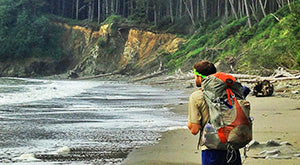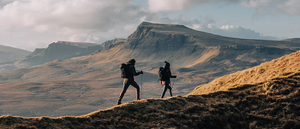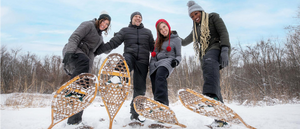Tips for Reducing Your Environmental Impact While Hiking and Camping

Hiking and camping offer a wonderful way to connect with nature, but it’s important to do so responsibly to minimize our environmental impact. By following eco-friendly practices, we can help preserve the beauty of the outdoors for future generations. Here are some tips to reduce your environmental impact while hiking and camping.
1. Follow "Leave No Trace" Principles
The Leave No Trace (LNT) principles are a set of guidelines designed to minimize human impact on natural environments. They include:
Plan Ahead and Prepare: Research your destination, check regulations, and prepare for weather conditions.
Travel and Camp on Durable Surfaces: Stick to established trails and campsites to avoid trampling vegetation.
Dispose of Waste Properly: Pack out all trash, leftover food, and litter. Use designated restrooms or dig a cathole for human waste at least 200 feet from water sources.
Leave What You Find: Preserve the natural environment by not picking plants, moving rocks, or disturbing wildlife.
Minimize Campfire Impact: Use a camp stove for cooking instead of a campfire. If you must have a fire, use established fire rings and keep it small.
Respect Wildlife: Observe animals from a distance and never feed them. Store food securely to avoid attracting wildlife.
Be Considerate of Other Visitors: Keep noise levels down and yield to others on the trail.
2. Use Eco-Friendly Gear
Choosing eco-friendly gear is a great way to reduce your environmental footprint. Look for products made from sustainable materials, such as recycled polyester or organic cotton. Some other tips include:
Buy Quality Gear: Invest in durable, high-quality gear that will last for years, reducing the need for frequent replacements.
Repair, Don’t Replace: Fix damaged gear instead of discarding it. Many brands offer repair services or sell repair kits.
Eco-Friendly Clothing: Wear clothing made from sustainable materials and opt for natural fibers like merino wool or bamboo.
3. Reduce, Reuse, Recycle
The mantra of "Reduce, Reuse, Recycle" applies to the outdoors as well.
Reduce Packaging: Buy food in bulk to minimize packaging waste. Opt for reusable containers and bags.
Reusable Water Bottles: Carry a reusable water bottle instead of single-use plastic bottles. Consider a water filtration system for long hikes.
Recycle and Pack Out: Bring a small bag to collect recyclables during your trip. If you find litter on the trail, pick it up and pack it out.
4. Practice Responsible Food Storage
Improper food storage can attract wildlife, leading to dangerous encounters and potentially harmful consequences for animals.
Bear-Proof Containers: In bear country, use bear-proof containers or hang food in a bear bag away from your campsite.
Store Food Properly: Keep food in airtight containers to prevent odors from attracting animals.
Pack Lightweight, Non-Perishable Food: Choose foods with minimal packaging that are easy to pack and carry out.
5. Choose Low-Impact Campsites
Selecting a campsite with minimal environmental impact is crucial.
Established Campsites: Camp in designated areas that are designed to handle human traffic.
200 Feet from Water: Set up camp at least 200 feet away from lakes and streams to protect water sources from contamination.
Use a Camp Stove: Instead of making a fire, use a portable camp stove for cooking. If you must have a fire, use a fire ring and keep it small.
6. Conserve Water
Water is a precious resource, especially in remote areas.
Use Biodegradable Soap: When washing dishes or yourself, use biodegradable soap and do so at least 200 feet from water sources.
Water Filtration: Filter and purify water from natural sources instead of bringing bottled water.
Limit Water Use: Use water sparingly when cooking, cleaning, or bathing.
7. Respect Wildlife and Flora
Wildlife and plant life are essential parts of the ecosystem, and our actions can impact them.
Observe from a Distance: Never approach or feed wildlife. Maintain a safe distance and use binoculars for viewing.
Avoid Picking Plants: Let flowers and plants remain in their natural environment for others to enjoy.
Respect Seasonal Restrictions: Be aware of seasonal restrictions, such as avoiding certain areas during breeding seasons.
8. Travel Sustainably
How you travel to your hiking or camping destination also affects the environment.
Carpool or Use Public Transport: Reduce your carbon footprint by carpooling with others or using public transportation to reach your destination.
Offset Carbon Emissions: Consider purchasing carbon offsets for your travel to compensate for your environmental impact.
Use Fuel-Efficient Vehicles: If you must drive, use a fuel-efficient vehicle to minimize emissions.
Conclusion
Reducing your environmental impact while hiking and camping is about making mindful choices that respect nature. By following these tips and adhering to Leave No Trace principles, you can enjoy the outdoors responsibly while helping to preserve it for future generations. Every small action contributes to the larger goal of protecting our natural world, so let’s all do our part to keep the wilderness wild.







Leave a comment